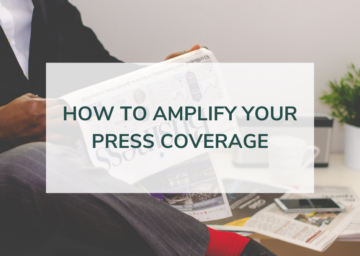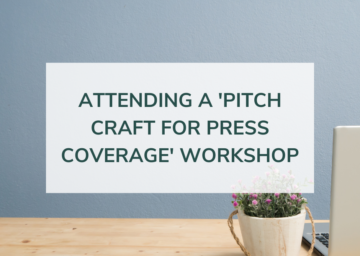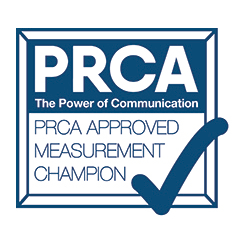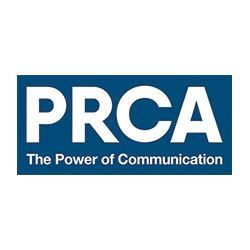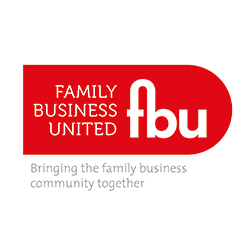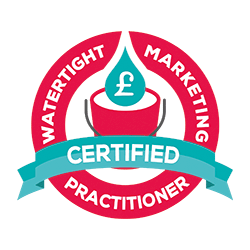How to Secure Coverage on Local Radio
23rd February 2023 / All, Blog, How To, Resources
It’s easy to assume that the audience for local radio is smaller, and therefore offers fewer opportunities for high-profile coverage, but in fact, securing coverage on local radio holds several advantages.
According to RAJAR listening figures, audiences for local radio channels are increasingly promising. In the last year alone, reach among audience members has gone up by 2% (during Covid, this figure was an impressive 15%). Additionally, the target audience for local radio is shown to be aged 45+, which matches the audience for many businesses.
In a recent series of ‘Perfect PR’ interviews carried out by Roxhill, Clinton Rogers gave some really useful insights from his time working in local radio. If you’re a Roxhill member, like Nellie PR, you can watch the interview online.
As a former national press journalist for the BBC, Clinton set up and ran BBC Somerset Sound until his recent retirement, and through this experience has accrued plenty of invaluable experiences in radio journalism.
In this blog post, I wanted to share some of Clinton’s insights and insider tips into the landscape of local radio, as well as our own Nellie PR advice from the Pitch Craft for Press Coverage training. I’ll cover the fundamental differences between national and local radio, as well as the best ways to pitch yourself, or the business you work for, as a radio guest.
If you find this blog post useful and want to know more about creating the perfect pitch, make sure to check out our Pitch Craft for Press Coverage training options for one-to-one and group mentoring and feedback sessions. And, don’t forget to check out Roxhill if you are looking for a great media database.
Let’s get started on all the things you should consider when looking to pitch to local radio.
How is pitching for local radio different?
If you’re looking to pitch to a local radio show, there are a few things to take into consideration.
First of all: Is your story radio-worthy? Unlike TV and print, radio is an entirely audio-based media, and as such, it lends itself to particular stories more than others. Considering this, you must think carefully about who it is you’re pitching forward, because more than just being knowledgeable, they must also be a good talker – articulate and confident.
There are practical factors to consider, too, such as timing and segments.
Depending on the time of day you’re looking to get featured, you could be getting a much smaller or much larger portion of time on air. If you’re going on the morning show, for example, you’re likely getting 3-5 mins max. If you’re going on the mid-morning show, however, there’s usually a combination of music and guests, and as such, they may let guests talk for much longer – closer to 10 mins.
There are benefits to each, of course, so carefully consider where your story best fits.
Lighter, human-interest stories are best pitched for the mid-morning or mid-afternoon shows. News stories, on the other hand, will likely be placed during the ‘drive’ time at either end of the working day, when audience numbers are higher.
What qualifies as a ‘local’ story?
Local radio is reserved for local stories – which is the main difference it holds from national radio. You need to be aware of this when it comes to pitching. There are several factors that may qualify your story for local radio, such as location-specific details, but these factors can equally disqualify your story from local radio if you get it wrong.
A few things to consider when pitching:
- Make sure your story is local, not national. If your story (e.g., your product) is the smallest/biggest thing in the region, then great, you’ve got yourself a local story. If, on the other hand, it’s the smallest/biggest in the country, then it’s a national story, and not suitable for local radio.
- Similarly, local audiences don’t want to hear about things happening in regions outside their own. Don’t be tempted to pitch to your neighbouring region just because they’re close by – that sort of thing will get you nowhere when pitching, and may risk damaging relations with media personnel.
- Regional radio stations are drawn to stories about ‘real people’. They don’t want to talk to ‘suits’ as much as they want to speak to the workers of the companies, for example. Keep this in mind when deciding which speaker you want to pitch forward, and seek out case studies.
Who do you send your pitch to?
We’ve already mentioned segments within local radio shows, and for each show (i.e. breakfast, mid-morning, etc.) there will be a different Presenter and Producer. It’s the latter you want to contact, because they are the ones who decide upon the content of the show.
Above the Producer sits the editor of the station, who has an overall view of the show. You can pitch to them, but the Producers are a much better shot. Additionally, if you contact the main show’s email address, your pitch will likely get lost amongst the hundreds of other emails that get sent to that same address every day, so make sure you establish precisely who it is you need to contact.
To do this, ring up. It’s as simple as that.
If you don’t have any existing contacts within the show, or any knowledge of the team, call the station, ask who is producing the show you’re pitching to, and make sure you request their direct contact information.
What do include in your pitch:
If you’ve ever sent a pitch before, this process will feel fairly familiar to you.
- Open with an eye-catching subject line. Your subject line is the first thing a producer will see, so don’t simply put ‘news release’. Make it catchy and attention-grabbing. Give them a story that will intrigue them.
- Most people won’t read past the second paragraph of your pitch, so put all the important information up top. It should be punchy, so as a general rule of thumb, you should have one line max per story point – be concise and to-the-point.
- If you’re not a natural writer, hire someone to do the job for you. Copywriters and PR practitioners know how to write for journalists, so make sure you’re getting a professional to craft your pitches.
- Establish a timeline. Producers appreciate organisation, so if your story is taking place next week, send your pitch in advance (a week in advance, for example).
- Don’t be afraid to follow up on your pitch. Be mindful, however – there’s no point in reaching out just to say “have you received my pitch?” Get the most out of this follow-up call by using it to build relations and ask valuable questions. As long as you’re not being too pushy, they’ll be happy to have this conversation with you.
- Provide the expert. A great story is one thing, but don’t forget to also offer a great spokesperson to feature on the show. Within your pitch, summarise the story in a couple of lines, then provide details of the expert.
- On this note – if your speaker has previous experience on the radio, mention this to show that they have the skills and credibility. You can even share links to previous recordings of them speaking, should the producer want to see evidence of them in action.
- Images. Having said that radio is an audio-based media, if you do have images attached to your story, feel free to link to them within the pitch in case the radio show wants to include it on their social media. This saves them a job and will go a long way to helping you build great media relations with them.
If you struggle with it comes to writing successful pitches, be sure to check out the Pitch Craft for Press Coverage training, in which you’ll not only receive detailed tips, tricks, and insights on how to secure coverage, but you’ll also get feedback on your live pitches – whether you’re pitching to local radio, TV, or print. For more information on this, check out this sneak peek at what a Pitch Craft session is like to attend.
Establishing yourself for future coverage opportunities
Something not many people know is that there is a database of go-to experts that local radio shows will compile – a little ‘black book’ if you will.
Of course, landing yourself a place in this book is the goal, but you’ll need to earn it first.
Take things one step at a time and start by pitching yourself for a specific story. This is the only way of demonstrating your value as a regular spokesperson on your chosen subject matter.
After this first appearance on the show, by all means, ring up and let the station know that the spokesperson is keen to be included again if they need an expert. This is a great way to establish your credibility, build reputation, and foster great media relations.
Final thoughts
Thanks again Clinton Rogers for your tips and to Roxhill for your Perfect PR sessions. For more resources and advice on pitching, building media relations, and producing valuable content that will secure you great coverage and recognition, check out our blog page.
For additional tools, such as our list of Top SME Journalists to Follow on Twitter, or the best PR and Marketing Tools, take a look at our resources page.
If you have any questions about securing coverage on local radio, don’t hesitate to get in touch. You can book a free one-to-one consultation call with me by following this link, during which we can discuss anything from your questions about pitching, to the challenges you’re looking to overcome in your PR and comms strategy.





